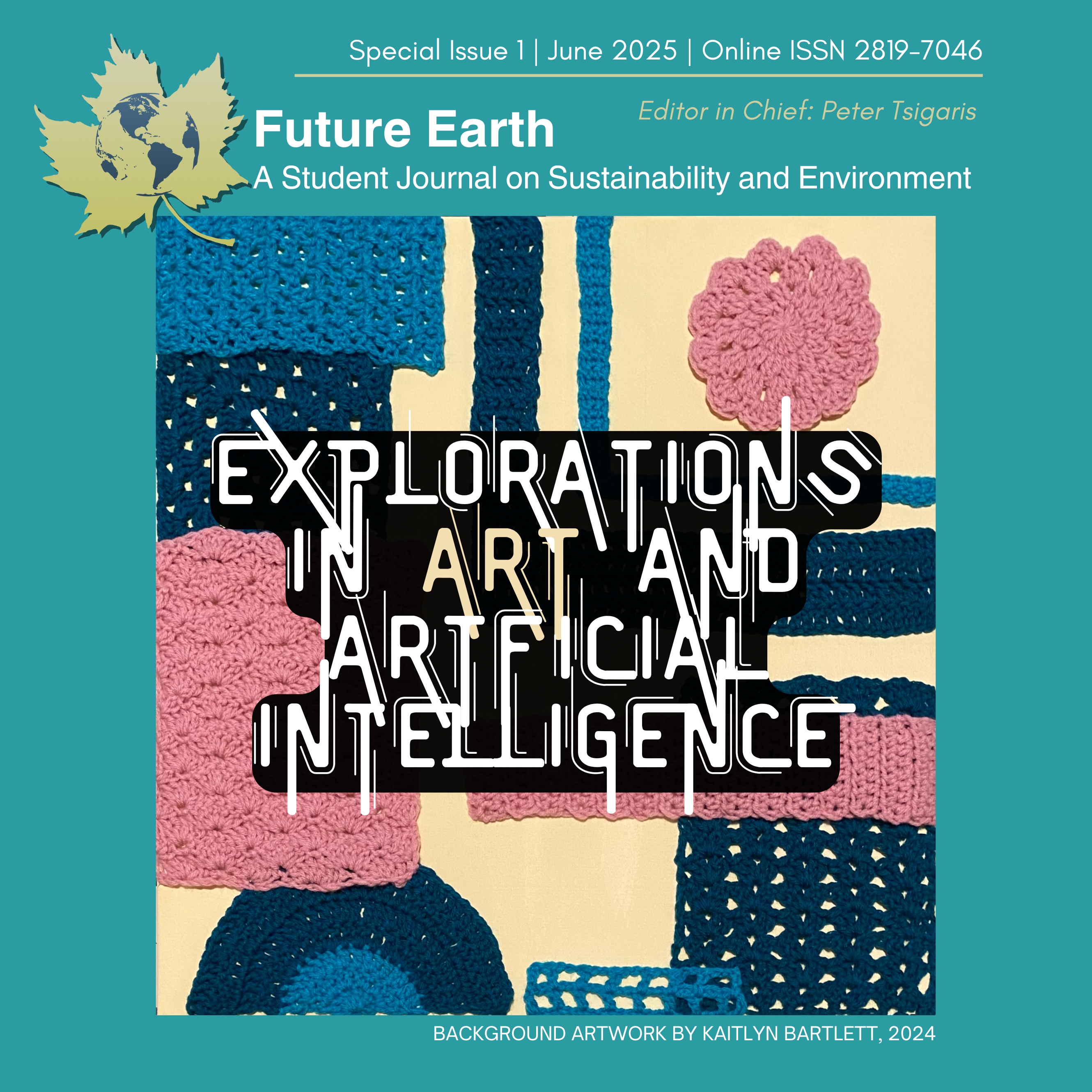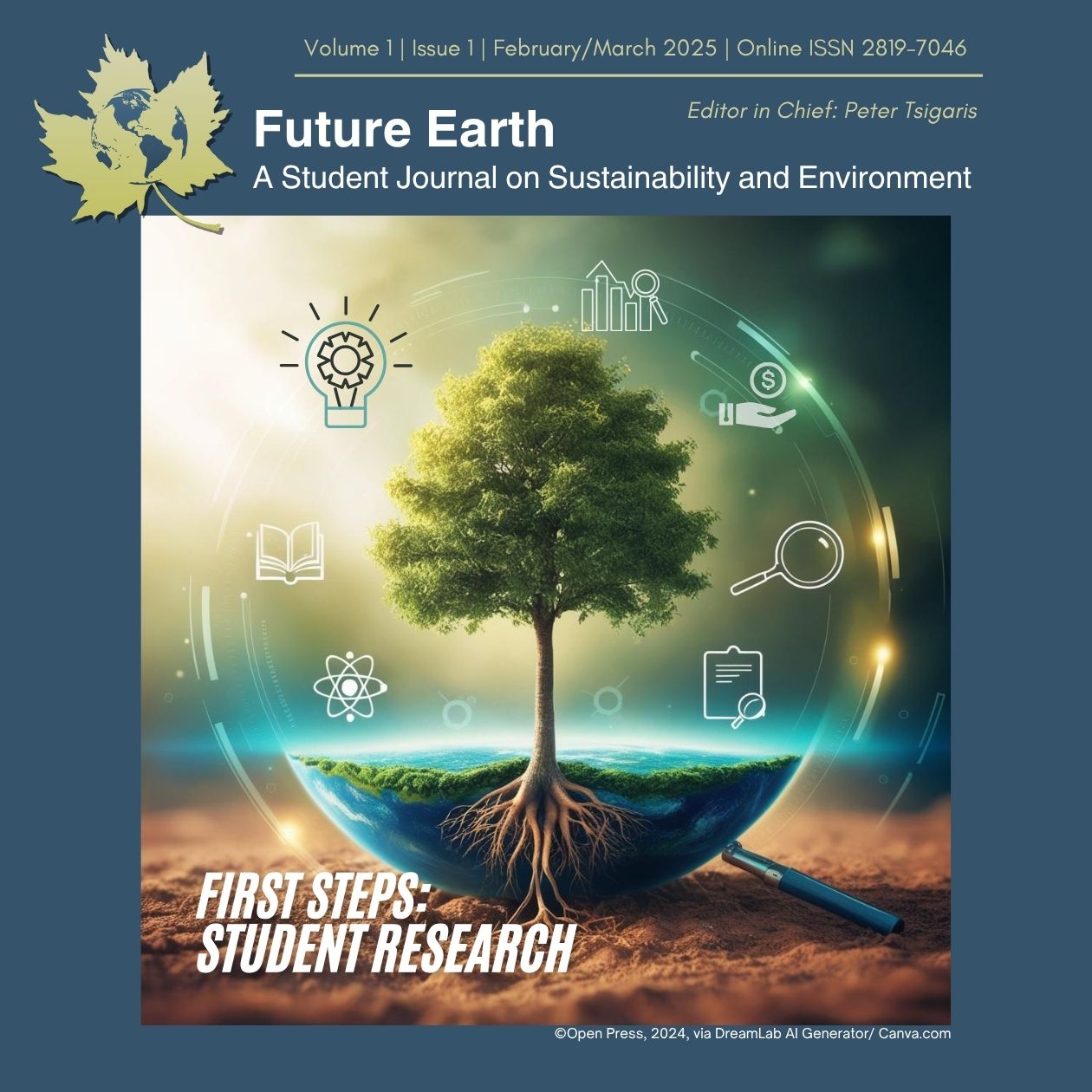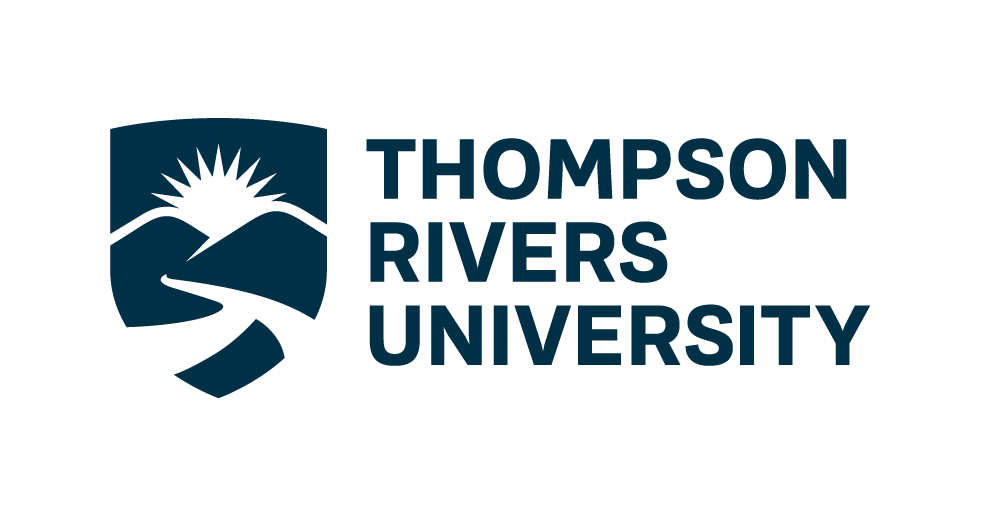Archives
-

Special issue - Explorations in Art and AI: Reimagining Sustainability Through Student Vision
2025This special issue of Future Earth features ten visionary student artists from Twyla Exner’s course, VISA 3830: Explorations in Art and AI (Fall 2024), whose work was originally exhibited at TRU’s Explorations in Art and AI gallery show. Inspired by the power and originality of their pieces, this collection brings their work into broader view—preserving it and sharing it beyond the walls of the gallery.
Through generative AI, these students explored sustainability not only as an environmental concern, but as a complex, evolving concept—deeply intertwined with ethics, culture, and technology. Under Twyla’s mentorship, they used AI tools to challenge assumptions, expand their creative practices, and push the boundaries of what art can be and do in the age of artificial intelligence.
Their work aligns deeply with the mission of Future Earth: to spotlight student inquiry and innovation that reimagines a more just, sustainable, and creative future.
PDF Special Edition Book (PDF/download)
Note: This Future Earth Journal Special Issue is licensed under a Creative Commons Attribution-NonCommercial-NoDerivatives 4.0 International License (CC BY-NC-ND 4.0) to respect the creative rights of the contributing artists.
This means that you are free to:
- Share — copy and redistribute the material in any medium or format.
Under the following terms:
- Attribution (BY): You must give appropriate credit, provide a link to the license, and indicate if changes were made.
- NonCommercial (NC): You may not use the material for commercial purposes.
- NoDerivatives (ND): If you remix, transform, or build upon the material, you may not distribute the modified material.
This license ensures the works in this Special Issue can be shared widely for educational and scholarly purposes, while also protecting the artistic integrity of the contributors by preventing alterations and commercial reuse.
-

First Steps: Student Research
Vol. 1 No. 1 (2025)This inaugural issue of Future Earth celebrates student-led inquiry, creativity, and reflection on sustainability, the environment, and society. Published by Thompson Rivers University and hosted by BC ELN through Open Journal Systems, it highlights the voices of undergraduate and graduate students exploring ecological integrity, social equity, and innovation in our shared planetary future.
Featuring essays, research articles, and commentary from diverse disciplines—from environmental science and policy to the arts and community-engaged practice—this open-access issue showcases the insight and imagination of emerging scholars. By centering student authorship, Future Earth affirms that student voices are essential to shaping a more just and sustainable world.


